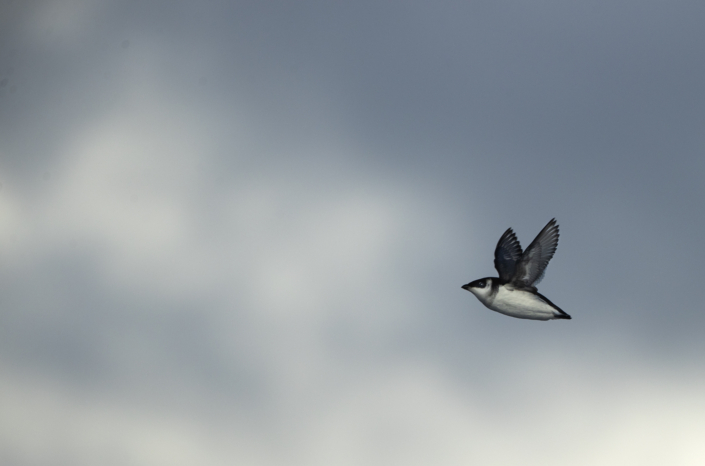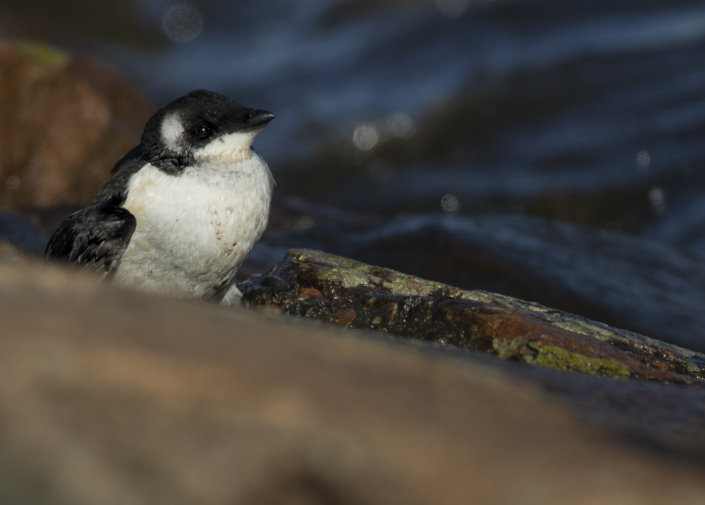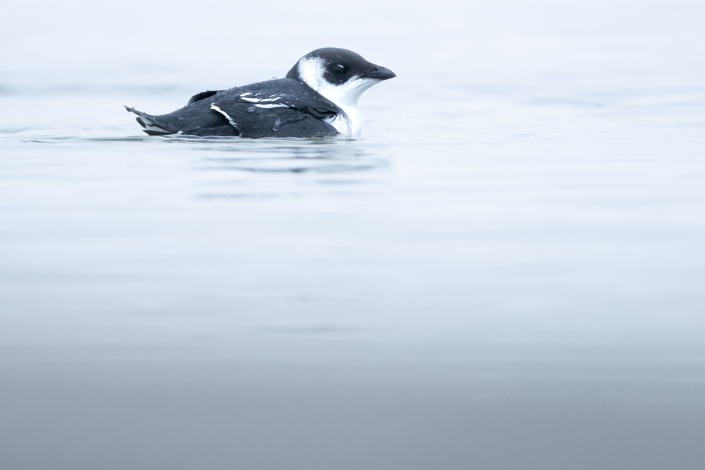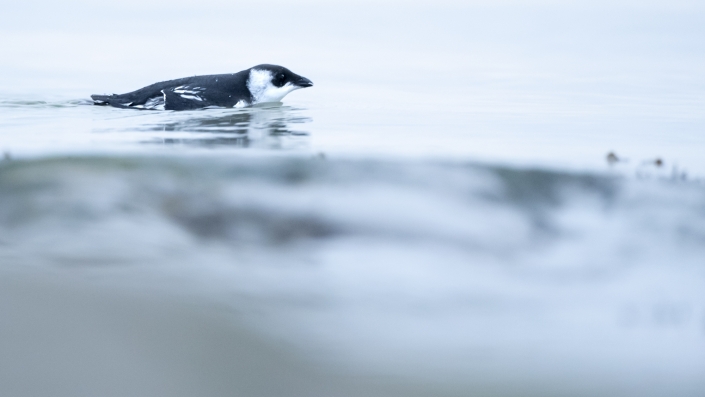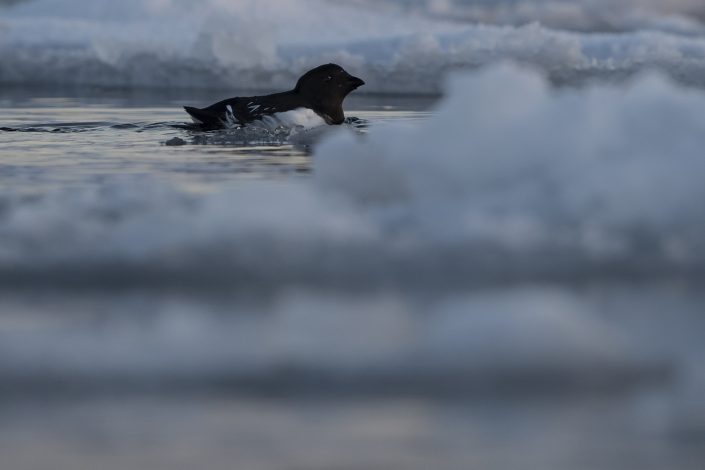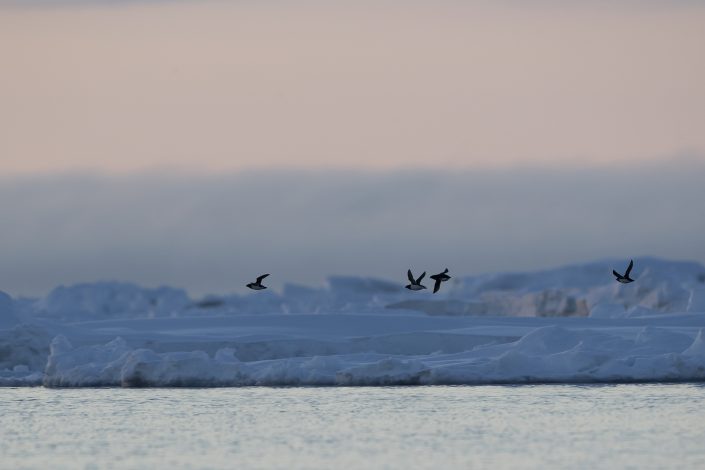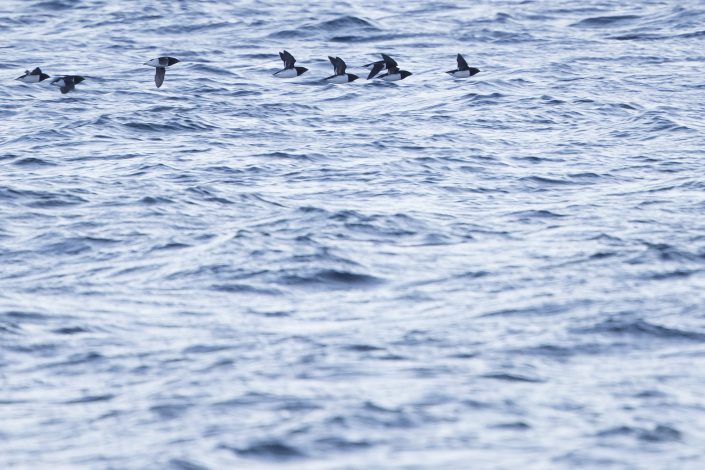This post is also available in: Swedish
Little auk – Alle alle
Little auk – Alle alle
is a small auk, the only member of the genus Alle. Alle is the Sami name of the long-tailed duck; it is onomatopoeic and imitates the call of the drake duck. Linnaeus was not particularly familiar with the winter plumages of either the auk or the duck, and appears to have confused the two species. It breeds on islands in the high Arctic. There are two subspecies: A. a. alle breeds in Greenland, Iceland, Novaya Zemlya and Spitzbergen, and A. a. polaris on Franz Josef Land.
This is the only Atlantic auk of its size, half the size of the Atlantic puffin at 19–21 cm in length, with a 34–38 cm wingspan. Adult birds are black on the head, neck, back and wings, with white underparts. The bill is very short and stubby. They have a small rounded black tail. The lower face and fore neck become white in winter.
The flight is direct, with fast whirring wing beats due to the short wings. These birds forage for food like other auks by swimming underwater. They mainly eat crustaceans, especially copepods, but also other small invertebrates along with small fish. They collect in large swarms before leaving their breeding rocks to head out to sea for food as well as when they return.
Although populations appear to be decreasing, this is not currently thought to be rapid enough to be of concern for the species in the medium term, especially as global little auk numbers are generally rather fluid. Little auks have been shown to be able to buffer fluctuations in prey availability, caused by climate change, via plasticity in their foraging behavior, which is likely to make accurate conservation assessments more difficult.
It sounds like this
Recording by Fernand DEROUSSEN from Xeno canto



